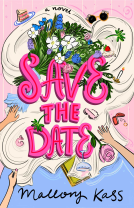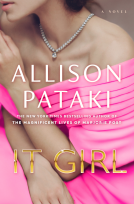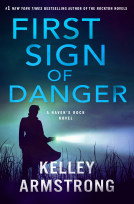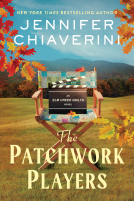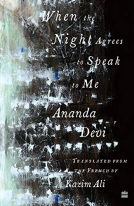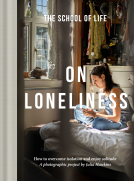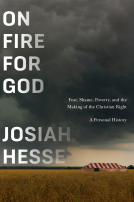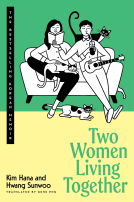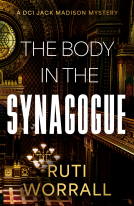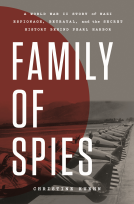
Writing Wild
Women Poets, Ramblers, and Mavericks Who Shape How We See the Natural World
by Kathryn Aalto
This title was previously available on NetGalley and is now archived.
Send NetGalley books directly to your Kindle or Kindle app
1
To read on a Kindle or Kindle app, please add kindle@netgalley.com as an approved email address to receive files in your Amazon account. Click here for step-by-step instructions.
2
Also find your Kindle email address within your Amazon account, and enter it here.
Pub Date Jun 23 2020 | Archive Date May 01 2020
Talking about this book? Use #WritingWild #NetGalley. More hashtag tips!
Description
"Re-centers and gives voice to a diversity of women naturalists and writers across time." —Cultivating Place
In Writing Wild, Kathryn Aalto celebrates 25 women whose influential writing helps deepen our connection to and understanding of the natural world. These inspiring wordsmiths are scholars, spiritual seekers, conservationists, scientists, novelists, and explorers. They defy easy categorization, yet they all share a bold authenticity that makes their work both distinct and universal. Part travel essay, literary biography, and cultural history, Writing Wild ventures into the landscapes and lives of extraordinary writers and encourages a new generation of women to pick up their pens, head outdoors, and start writing wild.
Available Editions
| EDITION | Other Format |
| ISBN | 9781604699272 |
| PRICE | $24.95 (USD) |
| PAGES | 288 |
Links
Average rating from 36 members
Featured Reviews
 Abby S, Reviewer
Abby S, Reviewer
A wonderful read an introduction to a group of women writers.Women who were strong women who understood the importance of nature.writingin the outdoors,The author has written an informative ode to these female authors and their love of nature in its purest form,#netgalley #timberpress
 Reviewer 510282
Reviewer 510282
I cannot overstate the degree to which a book like this--which fills in gaps in the nature-writing canon where women have long been speaking, but never given the microphone--is relevant to my interests. I heard about it months ago, tried to put it on order with one local indie bookstore, failed, but several weeks later was successful in placing a pre-order at another bookstore. So I was thrilled at the possibility of reviewing an advanced reader copy! However, the file is not a format compatible with any reading app or device I have available to me. I have learned not to request e-ARCs from Netgalley that cannot be viewed in the Kindle app, but usually the book's summary provides a disclaimer of same. In this case, it did not, and Netgalley troubleshooting guides have not been sufficient to overcome this obstacle, so unfortunately I won't be able to read and review this book for my followers, though I look forward to doing so in April!
 Reviewer 397197
Reviewer 397197
I just love this title and its association to the writing works of some of the most intriguing women writers of their time period. I was familiar with some of these writers such as Rachel Carson who educated the public through her works, especially Silent Spring(1962). She explained in layman’s terms the dangers of pesticides and encouraged a proactive consumer movement. Of course, as a woman, she was attacked by the chemical industry and the government as an alarmist. But her public warnings eventually led to the creation of the Environmental Protection Agency. Others in this book evoked similar strength of character through their writings. The author gave these writers the spotlight and recognition they deserved such as Dorothy Wordsworth whose famous brother William used some of his sister’s writing and claimed it as his own. Another example was Susan Fenimore Cooper’s 1850 publication of her surroundings, Rural Hours, where she included the importance of the preservation of trees for the environment. It was also the first book of American nature writings. However, that distinction was given to Henry David Thoreau’s On Walden Pond, which was published four years later. But Cooper’s book was favorably acknowledged and even garnered praise from Charles Darwin. There were also present day writings of such notables as Rebecca Solnit, whose 2014 book, Men Explains Things To Me, led to the popular term, mansplaining. These are just a few examples of their inspiring and emotional writings contained in this extremely well researched book. I think Writing Wild would also be an asset to high school English classes and school libraries.
 Carol D, Reviewer
Carol D, Reviewer
This amazing book tells us about several renowned women who have written about nature and left a permanent mark on nature writing. I especially liked the list of other works by each woman. This was fascinating to read and would make a perfect gift for another nature lover.
I voluntarily read and reviewed an advanced copy of this book. All thoughts and opinions are my own.
Writing Wild by landscape-designer Kathryn Aalto is a field guide to 25 influential British and North American female nature writers. Among them: scientists, poets, novelists, explorers, gardeners, and journalists. Aalto describes the context within which they wrote, and key works, influences, and legacies. Chapters are illustrated with writer portraits and include excerpts from their texts. Prepare to be heart-broken by Kathleen Jamie’s poem At the end of my winter.
For Kathryn Aalto, the “beating heart of the nature-writing genre” is the personal essay - and many of the chapters begin with an exploration of the writer's natural habitat: combing the undergrowth for a Mary Oliver pencil; pottering in Vita Sackville-West’s garden, and ascending Scafell Pike in Wordsworth country - Dorothy, that is. There are pretty passages with wild honeysuckle and sassafras, and serious passages on racial and gender heritage.
Writing Wild has put at least half-a-dozen new writers on my radar and in particular has inspired me to read Diane Ackerman, Kathleen Jamie, and Elizabeth Rush. Other writers examined include Gretel Ehrlich, Carolyn Finney, Helen Macdonald, Rebecca Solnit, and Annie Dillard.
Writing Wild is an informative introduction for those looking to discover the best of women’s environmental narrative nonfiction, cli-fi, and nature-inspired prose and poetry. It’s also a reminder to be well-read regarding contemporary social and climate issues. Lovely design details as well.
 Shirley B, Librarian
Shirley B, Librarian
With brief excerpts of prose, poems and essays and added recommendations for further reading, this bibliographic resource offers introductions to many phenomenal authors well beyond the 25 who are featured.
https://lawrence.bibliocommons.com/item/show/386101119
 Julie P, Librarian
Julie P, Librarian
Writing Wild is a celebratory treasury of women’s nature writing from a range of disciplinary and artistic perspectives from the late 1700s to the present. Aalto describes her book as “a field guide to twenty-five individual trees in a forest of voices” of women writing about the natural world. As a librarian, I am compelled by any book that celebrates other books, creating its own cohesive thread across centuries, and telling a story through others’ writing. Add idyllic imagery, windows into distant landscapes, and you’ve got me once more. Add Aalto’s dutiful excavation and exaltation of historically under-credited women authors, and I’m altogether on board. This book assembles these women authors’ work in one beautiful, succinct, and pleasurable package. It is written for a particular audience -- let’s call them the gardened class. Women of color and working class women authors are underrepresented. Later, she nearly apologizes for the term “ecofeminism” and I wondered who she thinks is left in 2020 who reads women’s nature writing but can’t palate the term. While Aalto could have been bolder, her book showcases the bold writing of others. It has led me to writers whose work I am so grateful to now know. I look forward to widely recommending this book.
 Margaret F, Reviewer
Margaret F, Reviewer
I don’t read a lot of nonfiction, but I do enjoy reading books about nature, so Writing Wild appealed to me. Kathryn Aalto’s reason for writing her book was to highlight what these 25 women writers have written, their historical significance and the barriers, biases and bullying they overcame to write. It covers two hundred years of women’s history through nature writing, including natural history, environmental philosophy, country life, scientific writing, garden arts, memoirs and meditations and does not aim to dismiss men’s contributions. Gisela Goppel’s portraits of each writer head each chapter. Aalto writes an introduction to each writer and includes excerpts of prose, poems and essays with added recommendations for further reading, plus a list of sources and an index.
Predominantly American and British, some of these women writers are familiar to me, such as Dorothy Wordsworth, Vita Sackville West, Nan Shepherd, Rachel Carson, Mary Oliver, Annie Dillard and Helen Macdonald. Others are new to me, but I would like to read several of their works, such as Andrea Wulf’s book The Brother Gardeners in which she explores how England became a nation of gardeners. Wulf, a design historian, writes horticultural and historical history through narrative nonfiction, borrowing techniques from fiction to make nonfiction come alive. Elena Passarello’s Animals Strike Curious Poses essay collection, which Aalto describes as written with laugh-out-loud humour and depth of empathy, also particularly appeals to me.
One of the things I learned reading this book is the name ‘Cli-fi’. I hadn’t come across it before but of course, it is not a new genre. As Aalto points out it goes back at least to Jules Verne’s 1889 The Purchase of the North Pole. Contemporary examples including Oryx and Crake by Margaret Atwood and Barbara Kingsolver’s Flight Behaviour. The writer she chooses to illustrate this genre is Saci Lloyd, an acclaimed writer of cli-fi, whose vivid and action packed books include The Carbon Diaries, about the effects of carbon reduction policies. They are gritty eco-thrillers featuring Laura Brown a 16 year old trying to manage life with a carbon deficit card. (3.5* rounded up to 4*)
We all know about Mary Oliver and her beautiful nature poems. So when I saw this book about other women who write about nature, I was very interested.
I didn't know there are so many of them! I have taken note to explore the writings of some of them. I hope there are more scribes who write poems as captivating and wonderful as Mary Oliver's. I do wish there were more samples, especially poems.
As I enjoy biographies, I did enjoy reading the two or three pages about each women.
Thank you Netgalley and Timber Press for this ARC. This is my honest review.
I could see us utilizing this book as a commentary or reference book for our high school library. I learned about several new female authors. I think this book would be a little too dry for general audiences to read from cover to cover in our library.
Thanks for the ARC!
This collection of essays affirm many outstanding authors on the loosely defined theme of "wild," such as Rebecca Solnit, Robin Kimmerer, and Annie Dillard, The writing approach and construction tend toward scholarly, which may not appeal all readers. It would make a great addition to college curriculums in multiple fields. I especially appreciated the list of books for further reading at the end of each chapter, which drove me toward wanting to pick up these source materials, though lessening my passion for reading this book. It's a great book for those wishing to expand their to be read list of writings about the wild. #Writing Wild #NetGalley
 Angela K, Librarian
Angela K, Librarian
I really enjoyed this collection of essays/portraits that introduced me to several writers whose work I was unfamiliar with (and that I plan to read more of as a result of this book). I would have liked to see a more diverse selection of writers included, with more international representation (even within the English speaking world, more Canadian, Australian, and other authors could have been included); the collection focuses mainly on US and British writers. Thank you to Netgalley and the publisher for this advance copy.
A thoroughly lovely introduction or reintroduction to 25 nature writers with gorgeous design elements throughout!
Kathryn Aalto's running narrative sets the perfect tone for the short prose, poetry, and essay excerpts shared from each writer. I can see "Writing Wild" featured on a coffee table, in college coursework, as a nonfiction book club pick, as a travel/nature-related gift, and ― most assuredly ― as a refreshing volume to dip in and out of during a quarantine when you desperately need an expansion of perspective and a mental ramble in unreachable fields. What a breath of fresh air!
I particularly appreciated the further reading sections and how they're thoughtfully themed and grouped after each writer. They transform this into a bibliographic resource that features far more than the 25 writers who are officially profiled. I'm not sure any reader could make it through this volume without adding several new writers or titles to their TBR lists!
My thanks to #NetGalley and Timber Press for a digital ARC of #WritingWild.
 Robin G, Reviewer
Robin G, Reviewer
In this book, author Kathryn Aalto celebrates 25 women writers who have contributed to our understanding of the natural world. Scholars, conservationists, essay writers, explorers and more... each of these women have added to our connection with nature in their own unique ways through hundreds of years of history. Part biography, part travel essay, Writing Wild guides the reader through the lives of these writers and the legacy they left behind, and encourages the next generation of women to continue.
Writing Wild introduced me to a whole new genre. Many of these female writers were new to me, although some I'd met in history before. Still Aalto does a wonderful job of adding the details needed to see them as whole women and their unique place in literature. Aalto does a wonderful job of introducing the environment in which each of these writers would have been immersed. She takes the reader on a journey of highlighting each woman's contributions to history while allowing their own voices to shine through. Writing Wild would make a delightful read for anyone interested in women's history, or environmental issues.
*Disclaimer: I received a free copy of this book from the publisher. All opinions are my own.
I was greatly looking forward to reading this book but have not been able to download it onto my kindle or convert it into into a kindle format. To say I am disappointed is an understatement, however I have added it to my wishlist to purchase when it is published. In the meantime I'm giving it 5-stars based on what other reviewers have said about the content and how useful it is, and if I can find a way to read my Netgalley copy I will write a proper review.
 Anat L, Reviewer
Anat L, Reviewer
I've received a copy of the book from NetGalley in exchange for an honest review.
This is a beautifully rendered and curated book about nature writing by women. Years ago I took a course on Women Regionalists which I thought would figure prominently in this book, surprisingly there was little to no parallels. There were some familiar names like Geneva Grace Stratton the author of Limberlost, Dorothy Wordsworth, Vita Sackville-West and Helen Macdonald author of "H is for Hawk" (a book that has been languishing for years in my TBR list). But also many authors who I've never heard of like Gretel Ehrlich an American travel writer who was struck by lightning and wrote about her experience.
These type of books usually wreck havoc on my TBR lists and this was no exception. I've add some notable mentions to my ever growing list, such as Saci Lloyd's The Carbon Diaries, a cli-fi that sounds right up my alley or Elena Passarello whose "Animals Strike Curious Poses" sounds extraordinary. The highlight of the book for me were the chapter on Rachel Carson who wrote "Silent Spring" which raised a debate leading to the ban on DDT. And the chapter about Nan Shepherd, a Scottish Modernist writer and poet, whose work "The Living Mountain" is both poetic and philosophical.
However, some of the profiles felt rather sparse. Each of the women featured is given a few pages of biographical in bibliographical information as well as some prominent book quotes that exemplify their style. Sometimes this felt a little insufficient and too much like a Wikipedia page. If I could rate a 3.5-star this would be a more accurate rating .
My thanks to #NetGalley and Timber Press for a digital ARC of #WritingWild.
 Amy G, Reviewer
Amy G, Reviewer
A beautiful compilation of authors from all walks of life and all areas of spirit and writing. So many different views, opinions and lifestyles! I loved reading this and recommend it to anyone who likes this type of novels
Subtitled Women Poets, Ramblers, and Mavericks Who Shape How We See the Natural World, WRITING WILD is a lovely book that collects twenty-five notable women naturalists, who were/are also writers, poets, scientists, gardeners, essayists, journalists, biographers, ramblers. WRITING WILD celebrates the work and sisterhood of women as part of the conservation effort. Author Kathryn Aalto tells us not to worry if we have not heard the term eco-feminism; it’s enough to celebrate a lady poet.
Dorothy Wordsworth and Susan Fenimore Cooper are relatives of better-known writers, but seem to have shared their adventures and experiences, inspired some of their writings, even been plagiarised in a time when most women didn’t write more than letters and housekeeping diaries.
Rachel Carson, a scientist, ushered in an age of ecological concern when her book Silent Spring broke the news that the pesticide DDT was seriously harming the birds, was accumulating in larger birds up the trophic steps and would just as easily induce cancers and other illnesses in people.
Helen Macdonald wrote the autobiographical H Is For Hawk about training a sulky goshawk after her father died, on the edges of Cambridge, England. She has continued to write about birds.
Rebecca Solnit is, of course, that lady who penned the exasperated Men Explain Things To Me after a dinner party host ‘mansplained’ her own book to her on the strength of his having read a review and not absorbed the fact that his guest had written the original material. When not creating new words for our life experiences, she also writes about walking in nature.
Kathryn Aalto, commenting on the fact that environmentalism was for too long the preserve of the white male, has made sure to introduce us to several ladies from other backgrounds. Carolyn Finney writes about the black and female experience of America’s National Parks, explaining that the African American people in the past did not experience the shared ownership of these spaces.
Robin Wall Kimmerer is a botanist and writer whose background is the Potawatomi Nation. She is as comfortable giving a TED Talk as acting field guide on an environmental literature college weekend.
Giseal Goppel is an illustrator living in Germany, and she has drawn a head and shoulders portrait of each of the twenty-five women featured. Other ladies are mentioned two or three to a page, such as Barbara Kingsolver and Naomi Klein.
Suffice to say that if you want a list of recommended reading about women and nature, just prepare it from this book. Most of those featured are from Britain or America, but it’s a great start. I have to thank WRITING WILD for introducing me to so many illustrious and friendly companions on my walk.
Four and a bit rounded down.
This is a great book. It is to women nature writers what I really wanted Monster, She Wrote to be to women horror writers. Detailed profiles with lengthy direct quotes and some deep analysis combines really well with the author's smart, conversational tone that makes the book feel much more personal and immediate. My TBR has become the richer for it.
An excellent and diverse collection of writers from the past to the present.
A fantastic compilation of women nature writers throughout history. I was pleased with the diverse representation in this book and enjoyed learning about women I'd never heard of. I imagine this will be a loved resource for many women writers, specifically those in the environmental space.
If you feel the need to escape to the woods or a wide open field, to sink your toes into sand or hike up a mountain, this book will give you plenty of reading material to soothe your soul.
Summary
Writing Wild: Women Poets, Ramblers, and Mavericks Who Shape How We See the Natural World gives a glimpse of 25 women who write about nature. Kathryn Aalto covers a range in terms of culture and writing genre from the poetry of Dorothy Wordsworth to the activism of Rachel Carson to the poetry and activism of Camille T. Dungy. Aalto talks about European women, American women, African-American women, and Indigenous women to show nature writing from different perspectives.
Review
Each section of the book is fairly short, but Aalto packs in enough information and examples to leave the reader wanting more. I enjoyed the illustrations of each author at the beginning of each section, and I liked how Aalto incorporates excerpts of their work so their writing can stand for itself.
Aalto has clearly done her research for Writing Wild; she speaks of each author's backstory, and she travelled to many of the places the authors wrote about. I enjoyed seeing her perspective of landscapes combined with what each nature writer said. My favourite part of the book is how Aalto shows that nature writing applies to so much of life: environmentalism, spirituality, mental health, gender, sexuality, etc.
The one thing I wish the book had more of is BIPOC writers. Although there is some diversity in Aalto's choice of nature writers, there could be more; Writing Wild is missing Asian and Latinx perspectives, which I think would be fantastic additions. I do appreciate, though, how almost every chapter ends in a list of other women nature writers for further reading, and there's an extensive list of sources at the end of the book.
Rating: 4/5 stars
Publication Date: June 23, 2020
Thank you NetGalley and Timber Press for the ARC!
 Sarah M, Educator
Sarah M, Educator
A great book for classes focused on nature writing and the environment. I would happily use excerpts with my high school students.
In a world where nature writing - like many other fields - has traditionally been dominated by white male authors, it was a joy and a pleasure to read about so many creative and influential women, some of whom I'd heard of previously, some of whom were new to me.
Kathryn Aalto has created a wonderful hybrid here, with a book that is part biography, part essay, part nature writing, which is interesting and informative without ever becoming preachy or dry. I googled the featured women constantly throughout, wanting to find out more about their lives, and really feel that this book was like opening a window onto a world I hadn't previously considered.
A wonderful book which I will be gifting to all the women I know.
Thank you to NetGalley and to the publisher who gave me a free advance copy of this book in exchange fro an honest review.
 Media/Journalist 16509
Media/Journalist 16509
This is an excellent guide to a wide variety of women who wrote about the environment from all different backgrounds and genres. It does tend towards a rather academic or scholarly tone, and is best suited for reading in small doses. It's a great introduction to writers to get to know, as well.
Outstanding. The notes at the end of each biography are well researched. My TBR pile has doubled in size since reading this book. I appreciate the broad perspective. Female naturalists on both sides of the Northern Atlantic are covered. Perhaps a sequel would be female naturalists from the Southern Hemisphere. I really enjoyed this book.
This was absolutely brilliant and such an enjoyable read. I am a fan of nature writing, but had always felt that it seemed to be quite dominated by white male voices, and having access to this book is so much like having access to a beautiful reading list to work my way through. Whilst I have read a couple of these writers' works, it is only a very small amount, and I am planning to go to this book often and choose something new to read whenever I need to - which will probably be often.
Being serious, this book is just fantastic. The mix of bios and excerpts of different writers, mixed with Kathryn Aalto's own little memoir-ish pieces and nature writing, and then with the addition of Gisela Goppel's artwork! Gorgeous, and made me feel hopeful for the diversity of voices in nature writing. Cannot recommend this enough.
This is a wonderful book for an overview on Women Natural History Authors. The author presents short snippets of their writings, a biography and other writers who wrote about similar topics. Some will be familiar and some deserve to be discovered again. It makes a great starting point to read more by and about these women. Enjoy
Readers who liked this book also liked:
Kim Hana; Hwang Sunwoo
Biographies & Memoirs, Nonfiction (Adult), Parenting, Families, Relationships


